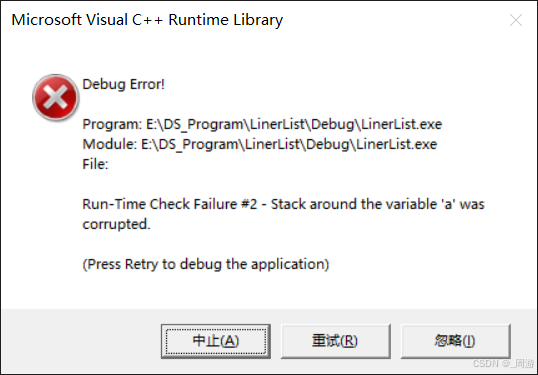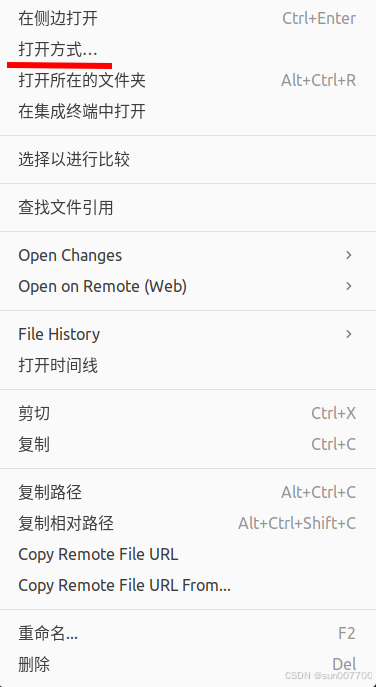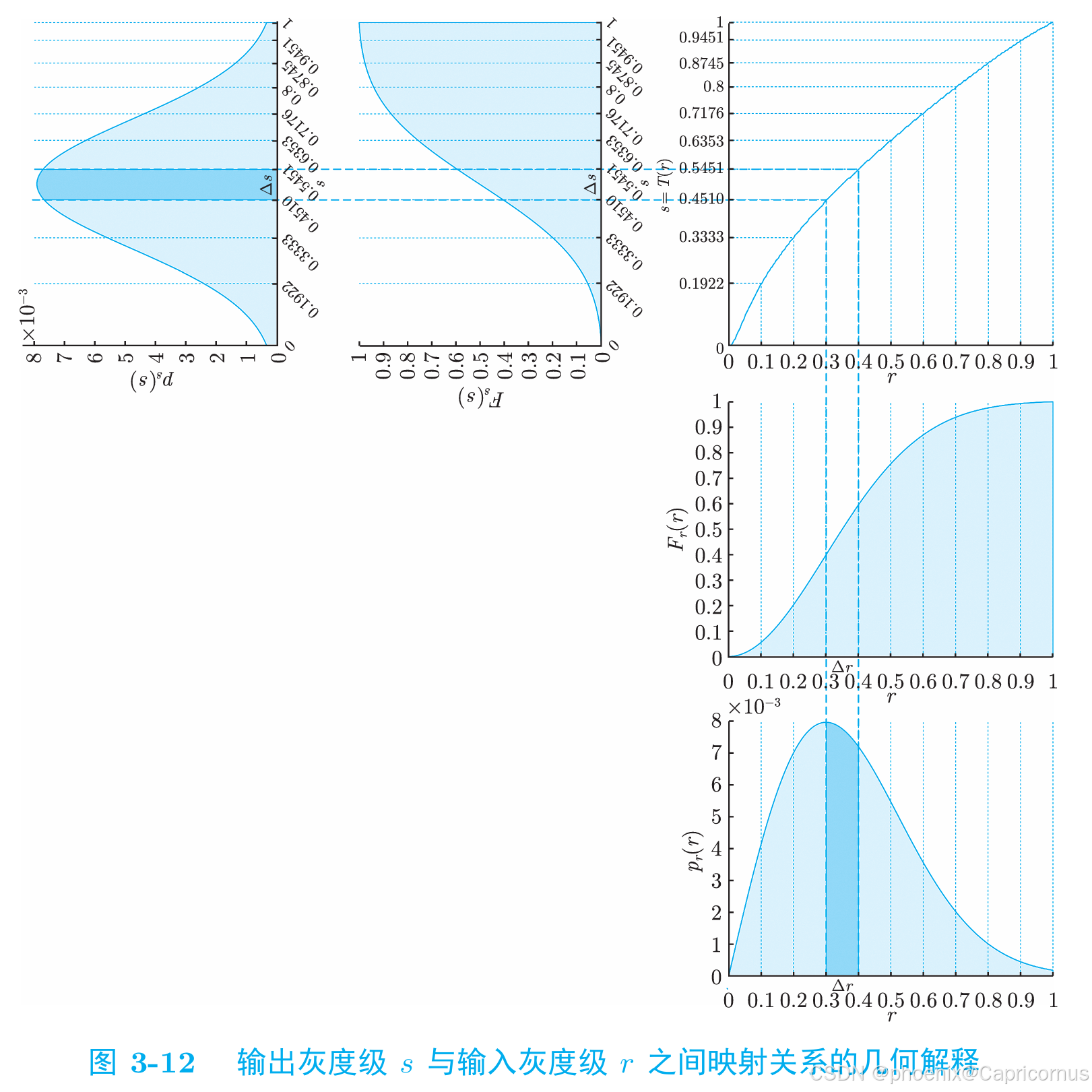目录
1. 概念与结构
1.1 静态顺序表
1.2 动态顺序表
2. 动态顺序表实现
2.1 SeqList.h
2.2 SeqList.c
2.3 Test_SeqList.c
3. 顺序表性能分析
线性表是n个具有相同特性的数据元素的有限序列。
常见的线性表有:顺序表、链表、栈、队列、字符串等;
线性表在逻辑上是连续的线性结构,在物理结构上并不一定是连续的。
线性表在物理上存储时,通常以数组和链式结构的形式存储,分别称之为顺序表和链表。
本文介绍顺序表。
1. 概念与结构
顺序表是用一段物理地址连续的存储单元依次存储数据的线性结构,一般情况下采取数组存储,在数组上完成数据的增删查改;
要求数据必须从第一个位置开始连续存放;
顺序表在逻辑上是连续的,在物理上也是连续的;
1.1 静态顺序表
#define N 100
typedef int SLDataType;
// 静态顺序表
typedef struct SeqList{
SLDataType arr[N]; // 定长数组
size_t size; // 有效数据个数
}SeqList;在定义时使用定长数组,会造成数组大小若太小则导致不够用,数组若太大则导致空间浪费;
1.2 动态顺序表
#define N 100
typedef int SLDataType;
// 动态顺序表
typedef struct SeqList {
SLDataType* arr;
size_t size; // 有效数据个数
size_t capacity; // 空间大小
}SeqList;在定义时仅给定数组首元素地址,并且基于size和capacity实现动态增容,相较而言更灵活。
注:1、通常会将顺序表的结构体命名为struct SeqList,即Sequence List;
2、建议目录结构:(注意自定义头文件的包含)
.h头文件:顺序表结构、声明顺序表的方法;
.c/.cpp源文件:实现顺序表的方法+测试;

3、为便于修改程序,通常会将顺序表结构体中的数据类型进行重命名,可命名为SLDataType;
为便于编写程序,通常也会对顺序表结构体进行重命名,可重命名为SeqList或SL;
2. 动态顺序表实现
2.1 SeqList.h
#include<stdio.h>
#include<stdlib.h>
#include<assert.h>
#define N 100
typedef int SLDataType;
typedef struct SeqList {
SLDataType* arr;
int size; // 有效数据个数
int capacity; // 空间大小
}SL;
// 空间检查
void SLCheckCapacity(SL* psl);
// 打印
void SLPrint(SL* psl);
// 初始化
void SLInit(SL* psl);
// 销毁
void SLDestory(SL* psl);
// 尾插
void SLPushBack(SL* psl, SLDataType x);
// 头插
void SLPushFront(SL* psl, SLDataType x);
// 尾删
void SLPopBack(SL* psl);
// 头删
void SLPopFront(SL* psl);
// 指定位置插入
void SLInsert(SL* psl,int pos, SLDataType x);
// 指定位置删除
void SLErase(SL* psl,int pos);
// 查找
int SLFind(SL* psl, SLDataType x);
// 修改
void SLModify(SL* psl, int pos, SLDataType x);
2.2 SeqList.c
#include "SeqList.h"
// 初始化
void SLInit(SL* psl) {
psl->arr = NULL;
psl->size = psl->capacity = 0;
}
// 销毁
void SLDestory(SL* psl) {
if (psl->arr) {
free(psl->arr);
}
psl->arr = NULL;
psl->size = psl->capacity = 0;
}
// 打印
void SLPrint(SL* psl) {
assert(psl);
for (int i = 0; i < psl->size; i++) {
printf("%d ", psl->arr[i]);
}
printf("\n");
}
// 空间检查
void SLCheckCapacity(SL* psl) {
if (psl->capacity == psl->size) {
// 常以2倍增容
int newCapacity = psl->capacity == 0 ? 4 : psl->capacity * 2;
SLDataType* tmp = (SLDataType*)realloc(psl->arr, newCapacity*sizeof(SLDataType));
if (tmp == NULL) {
perror("realloc fail\n");
exit(1);
}
psl->arr = tmp;
psl->capacity = newCapacity;
}
}
// 尾插
void SLPushBack(SL* psl, SLDataType x) {
assert(psl);
SLCheckCapacity(psl);
// 写法1
/*psl->arr[psl->size] = x;
psl->size++;*/
// 写法2
psl->arr[psl->size++] = x;
}
// 头插
void SLPushFront(SL* psl, SLDataType x) {
assert(psl);
SLCheckCapacity(psl);
int count = psl->size;
// 写法一
while (count) {
psl->arr[count] = psl->arr[count-1];
count--;
}
// 写法二
//for (int i = psl->size; i > 0; i--) {
// psl->arr[i] = psl->arr[i - 1];
//}
psl->arr[0] = x;
psl->size++;
}
// 尾删
void SLPopBack(SL* psl) {
assert(psl);
assert(psl->size);
psl->size--;
}
// 头删
void SLPopFront(SL* psl) {
assert(psl);
assert(psl->size);
for (int i = 0; i < psl->size - 1; i++) {
psl->arr[i] = psl->arr[i+1];
}
psl->size--;
}
// 指定位置插入
void SLInsert(SL* psl, int pos, SLDataType x) {
assert(psl);
assert(pos>=0 && pos<psl->size);
SLCheckCapacity(psl);
for (int i = psl->size; i >psl->size - pos;i--) {
psl->arr[i] = psl->arr[i-1];
}
psl->arr[pos] = x;
psl->size++;
}
// 指定位置删除
void SLErase(SL* psl, int pos) {
assert(psl);
assert(pos >= 0 && pos < psl->size);
for (int i = pos; i < psl->size - 1; i++) {
psl->arr[i] = psl->arr[i + 1];
}
psl->size--;
}
// 查找
int SLFind(SL* psl, SLDataType x) {
assert(psl);
for (int i = 0; i < psl->size; i++) {
if (psl->arr[i] == x)
return i;
}
return -1;
}
// 修改
void SLModify(SL* psl, int pos, SLDataType x) {
assert(psl);
assert(pos >= 0 && pos < psl->size);
psl->arr[pos] = x;
}2.3 Test_SeqList.c
#include"SeqList.h"
int main() {
SL sl1;
SLInit(&sl1);
printf("Test SLPushBack:PushBack5~10:\n");
SLPushBack(&sl1, 5);
SLPushBack(&sl1, 6);
SLPushBack(&sl1, 7);
SLPushBack(&sl1, 8);
SLPushBack(&sl1, 9);
SLPushBack(&sl1, 10);
SLPrint(&sl1);
printf("TestPushFront:PushFront 4~2:\n");
SLPushFront(&sl1, 4);
SLPushFront(&sl1, 3);
SLPushFront(&sl1, 2);
SLPrint(&sl1);
printf("TestPopBack:PopBack 10:\n");
SLPopBack(&sl1);
SLPrint(&sl1);
printf("TestPopFront:PopFront 2:\n");
SLPopFront(&sl1);
SLPrint(&sl1);
printf("TestInsert:Insert arr[4]=99:\n");
SLInsert(&sl1, 4, 99);
SLPrint(&sl1);
printf("TestErase:Erase arr[3]:\n");
SLErase(&sl1, 3);
SLPrint(&sl1);
printf("TestFind: Find 99:\n");
int retIndex = SLFind(&sl1, 99);
printf("The index of 99 is: %d\n", retIndex);
printf("TestModify:Modify 99 to 100:\n");
SLModify(&sl1, 3, 100);
SLPrint(&sl1);
SLDestory(&sl1);
}测试用例运行结果:

注:1、关于初始化与扩容问题:(方法多样,逻辑完整即可)
上文示例为SLInit使得psl->capacity初值为0,从而在SLCheckCapacity中对于0容量的扩容不能采取一概而论的二倍扩容法,上例使用三目操作符:?使得capacity被赋值为4。
也可在SLInit中就对capacity赋予一个初值,但对应的psl->arr就不可再赋值为NUL了,也需对应malloc相应大小的空间;
2、注意指定位置插入SLInsert与指定位置删除SLErase对pos参数的判定区别:
对于SLInsert,pos可取值size,即实现尾插效果;
对于SLErase,pos不可取值size,arr[psl->size]实际是数组arr最后一个有效数据的下一个位置;
3. 顺序表性能分析
优点:物理空间连续:便于利用下标随机访问;
缺点:(1)空间不够需扩容。
① 需要申请新的空间,拷贝数据,释放旧空间,有一定性能消耗;
② 一般增容呈2倍增长,存在空间浪费;
(2)头部或者中间位置的插入删除时涉及数据的移动,时间复杂度为O(N),效率低下;
注:越界是不一定报错的,系统对于越界的检查是设岗抽查,以VS为例:
int a[10];
a[10] = 1;
a[11] = 1;当我们运行如上代码,系统会报错:

再运行下文代码:
int a[10];
a[12] = 1;
a[13] = 1;系统不会报错。说明系统只重点检查部分位置的越界情况。






![60,【1】BUUCF web [RCTF2015]EasySQL1](https://i-blog.csdnimg.cn/direct/d31e7cb3e3eb4e24a61b09b57309bbb4.png)












